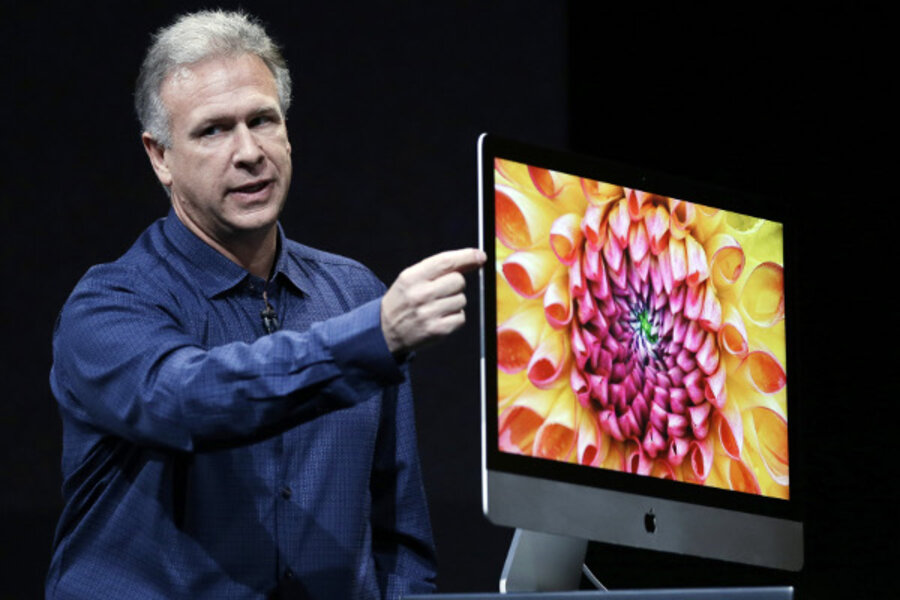Meet Apple's thinner, faster, stronger iMac
Loading...
With all the attention Apple has given to the iPhone and iPad over the past few years, it's nice when desktops get a little love.
The company announced major updates to the iMac -- which Apple VP Phil Schiller referred to as the company's "flagship" -- at its media event in San Jose, California, on Tuesday. The computer whose debut in 1998 started Apple's return to profitability is now in its eighth generation, and comes in 21.5-inch and 27-inch flavors.
Let's talk about aesthetic impressions first: the redesigned iMac is almost cartoonishly thin. The body tapers to just 5mm at the edges, although it's slightly thicker where the case meets the stand in back. Older iMacs had a 2mm gap of air between the display and the glass covering it -- now the two are laminated together, which not only makes for a thinner machine but, Apple says, eliminates a lot of the reflectiveness associated with glossy displays. The front and back of the case are joined with a technique called "friction stir welding," which joins two pieces of aluminum together with heat and pressure, allowing for an even slimmer profile.
The 21.5-inch iMac boasts a 1920x1080-pixel screen, while the 27-inch model has a 2560x1440 display. Both have LED backlighting and a viewing angle of 178 degrees -- plus, Apple says, each iMac will be individually color-calibrated at the factory. That ought to be welcome news to photographers and anyone whose work depends on faithful color reproduction.
The iMac is no slouch under the hood, either, although Apple made one significant omission: the new models have no optical drives, presumably in the interest of thinness. This isn't terribly surprising, given the company's moves away from disc media over the past year (Apple doesn't ship Mountain Lion, the latest Mac OS X operating system, on a disc, and it didn't offer a disc version of its predecessor Lion either), but it might sting a bit if you were hoping to watch a DVD on that gorgeous display. Each machine has four USB 3.0 ports, two Thunderbolt ports, an Ethernet port, and a headphone jack.
Optical drive aside, though, the new iMacs are plenty capable: Intel "Ivy Bridge" Core i5 or i7 processors, a discrete graphics card, and up to 3TB of disk space. Apple's also including a "Fusion Drive": a single hard drive that combines solid-state and traditional spinning-platter technology. (If you're not familiar with the difference, solid-state memory is faster and more reliable -- but also significantly more expensive -- than a traditional hard drive.) The Fusion Drive pairs a 128GB solid-state drive with a 1- or 3-TB hard drive. Applications go on the solid-state drive for speed; documents and media go on the hard drive for storage.
The 21.5-inch iMacs will start at $1,299, and Apple should start shipping them to customers in November. The 27-inch models will set you back at least $1,799; they'll begin shipping in December.
Readers, what do you think of the new iMacs? Share your thoughts in the comments section below.








